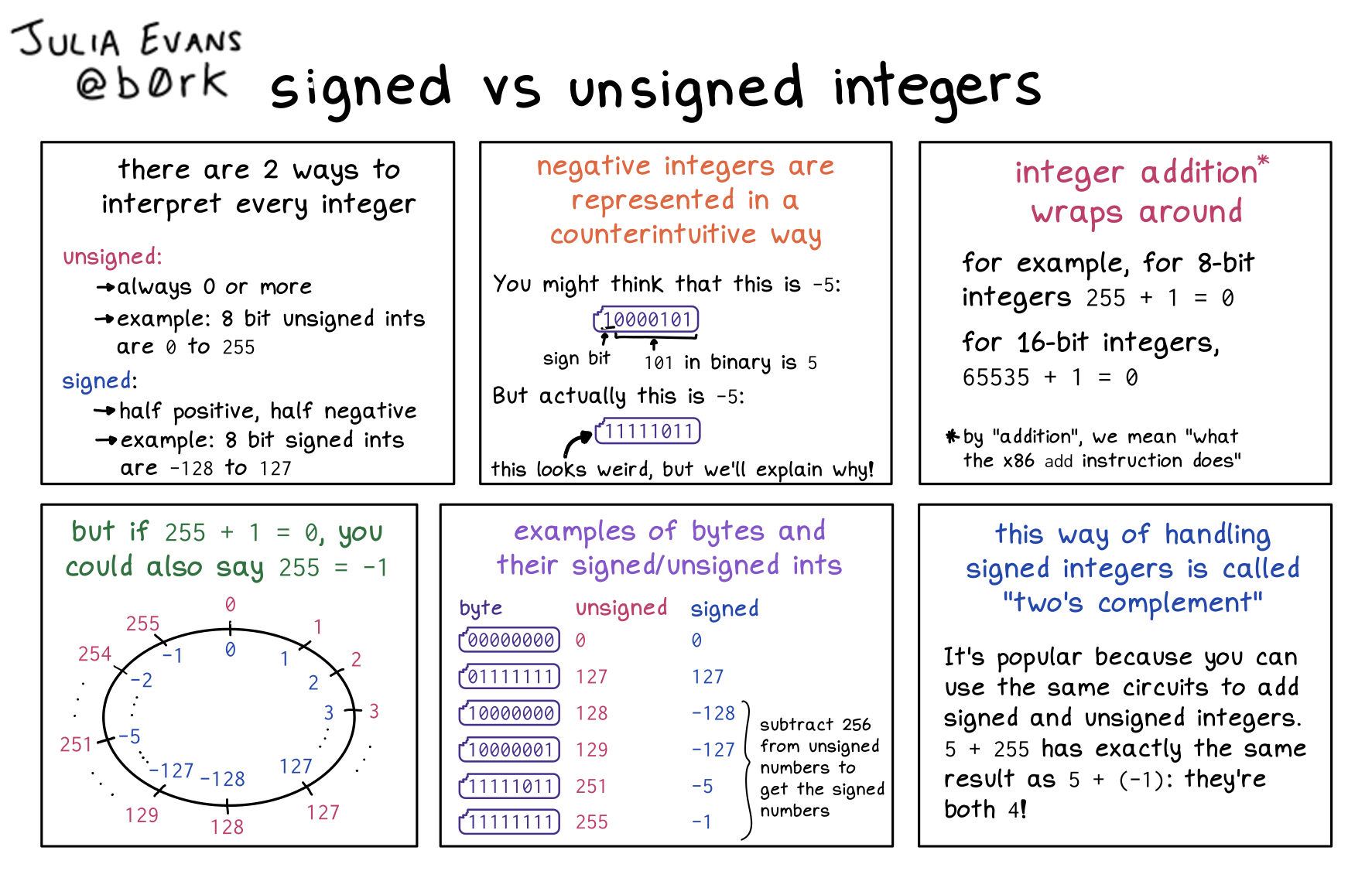
Here's a preview from my zine, How Integers and Floats Work! If you want to see more comics like this, sign up for my saturday comics newsletter or browse more comics!
 browse more comics!
get the zine!
browse more comics!
get the zine!
read the transcript!
signed vs unsigned integers
there are 2 ways to interpret every integer
unsigned:
- always 0 or more
- example: 8 bit unsigned ints are
0to255
signed:
- half positive, half negative
- example: 8 bit signed ints. are
-128to127
negative integers are represented in a counterintuitive way
You might think that this is -5: 10000101
(1 is the sign bit, and 101 in binary is 5)
But actually this is -5: 11111011
this looks weird, but we’ll explain why!
integer addition wraps around
for example, for 8-bit integers 255 + 1 = 0
for 16-bit integers, 65535 + 1 = 0
by “addition”, we mean “what the x86 add instruction does”
panel:
but if 255 + 1 = 0, you could also say 255 = -1
examples of bytes and their signed/unsigned ints
| byte | unsigned | signed |
|---|---|---|
00000000 |
0 | 0 |
01111111 |
127 | 127 |
01111111 |
128 | -128 |
10000001 |
129 | -129 |
11111011 |
251 | -5 |
11111111 |
255 | -1 |
subtract 256 from unsigned numbers to get the signed numbers
this way of handling signed integers is called “two’s complement”
It’s popular because you can use the same circuits to add signed and unsigned integers.
5 + 255 has exactly the same result as 5 + (-1): they’re both 4!
Saturday Morning Comics!
Want another comic like this in your email every Saturday? Sign up here!
